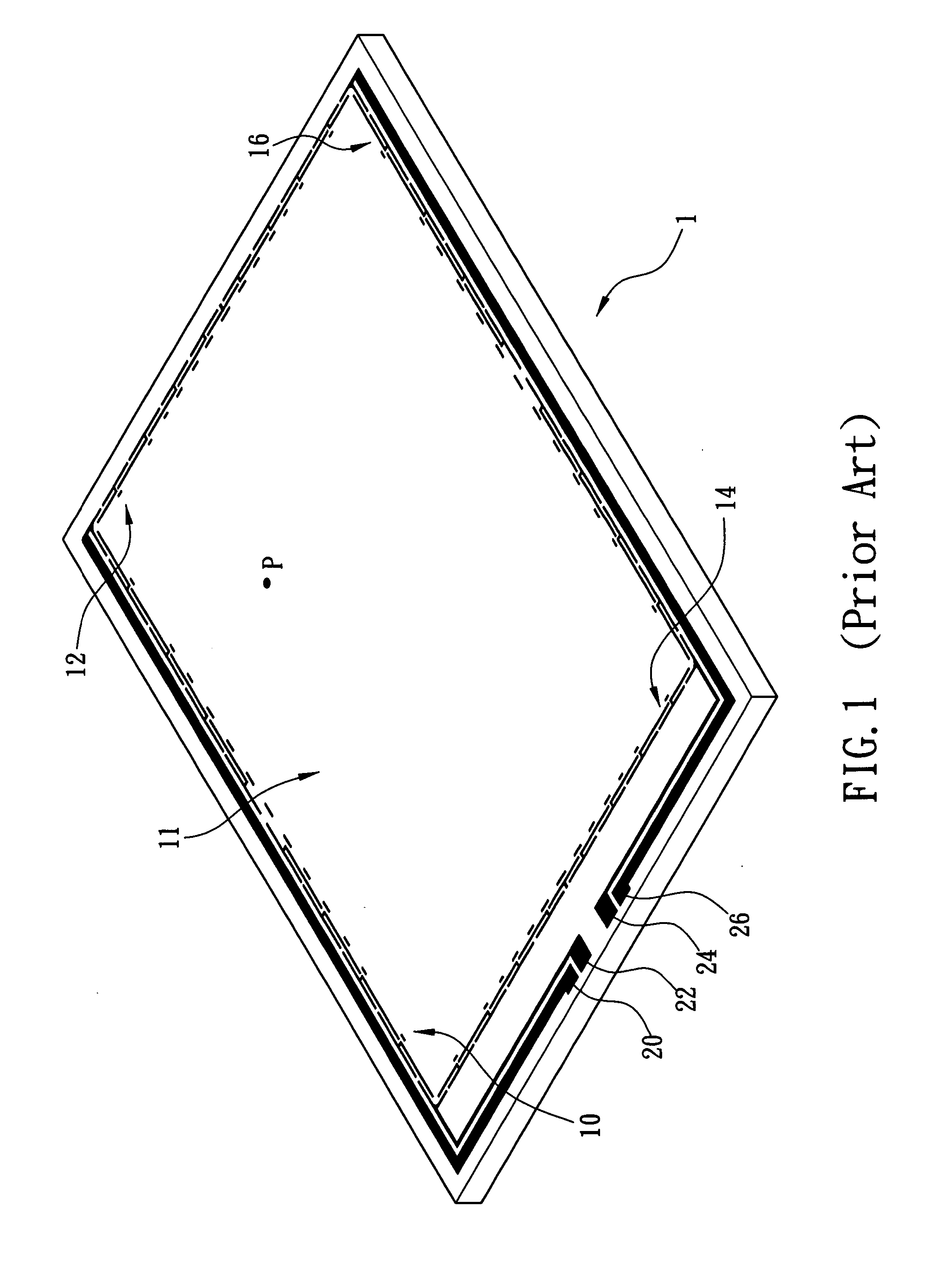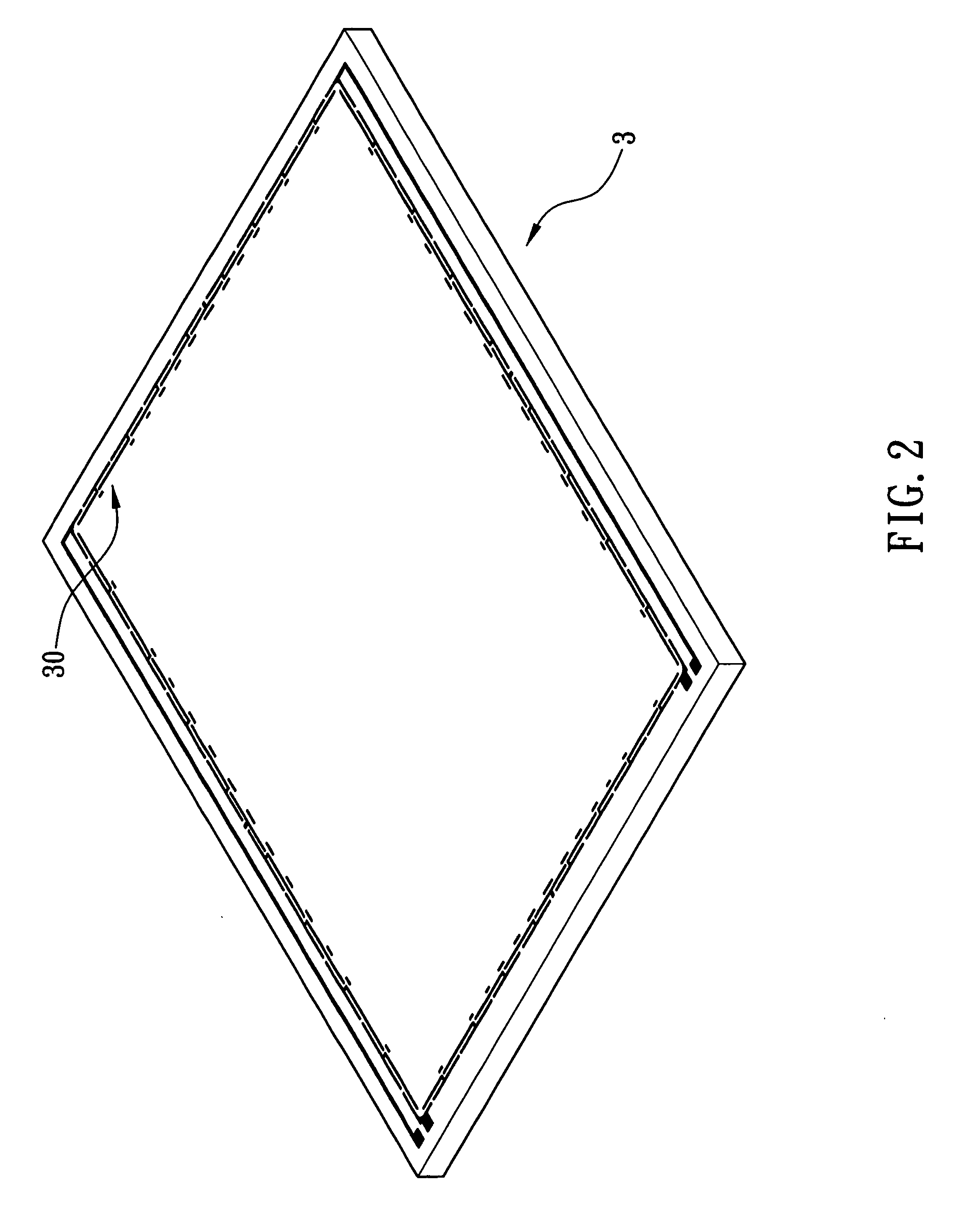Wiring of touch panel
a touch panel and wire technology, applied in the field of touch panels, can solve the problems of increasing screen cost, occupying a large room, and increasing manufacturing tim
- Summary
- Abstract
- Description
- Claims
- Application Information
AI Technical Summary
Benefits of technology
Problems solved by technology
Method used
Image
Examples
Embodiment Construction
[0022] Referring to FIGS. 2 and 3, a wiring of touch panel in accordance with the first preferred embodiment of the invention is shown. A transparent and conductive layer (not shown) is placed on the top surface of a glass substrate 3. A plurality of wires 30 are provided along the border between the edge of the transparent and the conductive layer and the transparent operating area 32. A flexible circuit board 4 is placed at one side of the transparent and conductive layer and the wires 30. The flexible circuit board 4 is extended beyond the glass substrate 3 and is electrically connected to a control circuit. The conductive end 34 is formed at the transparent and conductive layer between each of the wires 30 and the flexible circuit board 4. By using this technique, the plurality of parallel conductors of prior art are replaced by the flexible circuit board 4. This decreases the wiring area requirement. As a result, it is possible to produce touch panels with narrower border than ...
PUM
 Login to View More
Login to View More Abstract
Description
Claims
Application Information
 Login to View More
Login to View More - R&D
- Intellectual Property
- Life Sciences
- Materials
- Tech Scout
- Unparalleled Data Quality
- Higher Quality Content
- 60% Fewer Hallucinations
Browse by: Latest US Patents, China's latest patents, Technical Efficacy Thesaurus, Application Domain, Technology Topic, Popular Technical Reports.
© 2025 PatSnap. All rights reserved.Legal|Privacy policy|Modern Slavery Act Transparency Statement|Sitemap|About US| Contact US: help@patsnap.com



